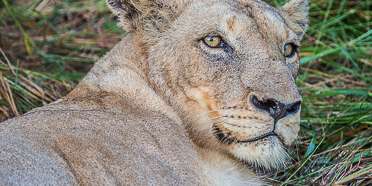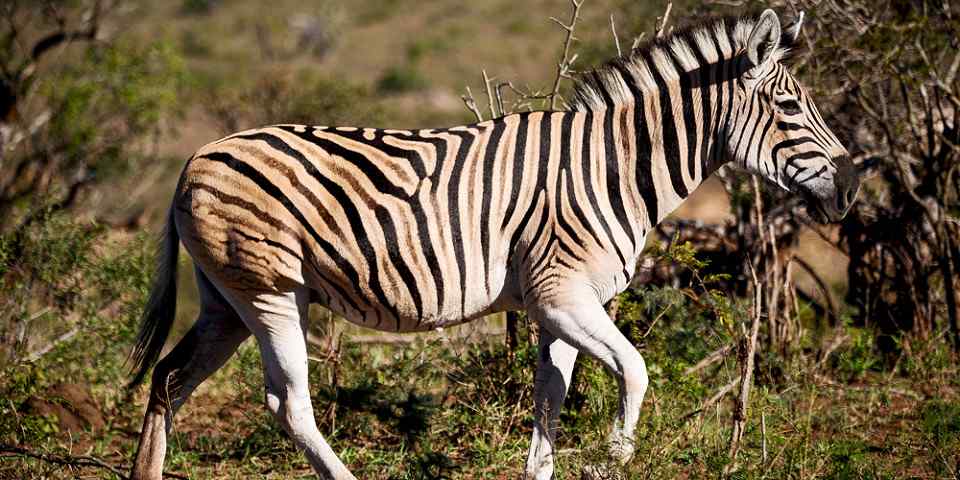
Lizzie is a reputed guidebook writer and author of the Footprint guides to South Africa, Namibia, Kenya, Tanzania, Uganda and Zimbabwe.
1 person found this review helpful.
A scenic country of emerald peaks, valleys and waterfalls and easy wildlife reserves to visit
Covering just over 17,000-sq-km (smaller than Kruger National Park), Eswatini is the smallest country in the southern hemisphere, and Africa’s last absolute monarchy. King Mswati III recently renamed Swaziland the Kingdom of Eswatini (‘place of the Swazi’) to mark 50 years of independence from British rule. It’s so little, I’ve driven across in less than a leisurely day, but there are plenty of things to do to keep you busy on a longer visit, from hiking in lush mountain landscapes to game-viewing in the parks and reserves. It’s also a good destination for adventurers, with an effective backpackers’ set-up and a number of activities on offer from caving to white-water rafting. The Swazi people are expert craft-makers, producing a wealth of high-quality African curios like pottery, baskets, traditional fabrics, soapstone carvings and beaded jewellery, and there are plenty of souvenir centres and shops to visit too.
Thanks to a handful of pioneering conservationists, there have been effective anti-poaching initiatives and substantial animal restocking, and Swaziland’s game parks are small but rewarding to explore. My top two big game parks are Hlane Royal National Park and Mkhaya Game Reserve (both excellent for elephant and rhino), but I’ve also enjoyed independent driving, as well as walking, horse-riding and cycling, at Mlilwane Wildlife Sanctuary and Mbuluzi Wildlife Reserve – neither has predatory game so there are opportunities to get out of a vehicle. I’ve always found Swaziland an accessible country to visit and the border crossings with South Africa are quick and easy. None of the varied parks and reserves is more than a two-hour drive away from each other, so it’s easy to visit a few in a relatively short time – ideal for first time safari-goers. Additionally, given that it’s hemmed in by KwaZulu-Natal to the south and west, Mpumalanga to the north, and Mozambique to the east, a visit here can easily be combined with numerous other attractions in the region, including Kruger.

Ariadne is a renowned African wildlife photographer whose work is featured in many well-known guidebooks and magazines.
Conservation and traditions in Eswatini
Eswatini (formerly Swaziland) is a tiny monarchy almost completely surrounded by South Africa (it shares its northeastern border with Mozambique). As border formalities are very casual and the country lies on South Africa’s main tourist route (between Kruger and KwaZulu-Natal), it is mostly visited on a South African holiday. Although it would be easy to drive straight through Eswatini, there is plenty to do and explore to make a longer stay worthwhile.
More or less depleted of wildlife by the end of the 1950s, Eswatini has made an impressive recovery thanks to the efforts of conservationist Ted Reilly. There are now several small but worthwhile parks under the umbrella of Big Game Parks. Mlilwane lacks any dangerous wildlife and is therefore ideal for unguided walking, horse riding and mountain biking. More exciting for the real safari enthusiast are Hlane Royal National Park and Mkhaya Game Reserve. Accommodation in Hlane is unpretentious and child-friendly, while Mkhaya offers a more high-end experience with a luxury lodge and guided drives and walks. Both are sanctuaries for rhinos and offer a thrilling experience of getting close to these big animals on foot. Other wildlife to be seen include elephants, giraffes and a variety of antelopes. It is possible to see lions in Hlane but they are kept in a separate enclosure.
Although the three Big Game Parks are good for general wildlife viewing, I feel they lack slightly in wilderness appeal. Malolotja Nature Reserve, by contrast, is altogether wilder and more pristine. It offers great hiking opportunities too, whether you fancy an easy day stroll or a more challenging overnight trail. There isn’t a lot of wildlife in Malolotja. You might see highland specials such as black wildebeest and blesbok, but that would be a bonus – the real attraction is the spectacular mountain scenery.
Eswatini caters well to adrenaline junkies, with zip-lining, caving, rafting, abseiling and canoeing being just some of the activities on offer.
While there is plenty to keep you busy for a couple of days in Eswatini, what really sets apart the kingdom is a level of traditionalism that’s harder to find in present-day South Africa. If that is what you’re looking for, my advice would be to soak up the slower pace of life, stroll around the colorful markets, talk to the locals and buy some crafts. The best way to experience Swazi culture, though, is to coincide your visit with one of the impressive annual festivals, the most famous one being the reed dance ceremony in August/September.

Mark is a travel writer who grew up in Africa and has written over 700 titles for Condé Nast Traveller, Travel Africa, BBC Wildlife and others.
The Unknown Kingdom
I’d wanted to visit the mysterious Kingdom of Eswatini (formerly Swaziland) for as long as I could remember, so I was delighted to cover a story on conservation in the country for BBC Earth magazine. Eswatini is home to many rare and fascinating creatures…but perhaps none so unique as 80-year-old conservation legend Ted Reilly.
Eswatini boasts 750km2/290mi2 of protected parks (and another 800km2/309mi2 of wildlife farms and conservancies) yet half a century ago it was a virtual wasteland, devoid of almost all its wildlife. Wildebeest had been declared vermin by the British colonial government and had died by the hundreds of thousands (along with almost everything else) at poisoned waterholes. With the support of the Swazi royal family, a dedicated young conservationist by the name of Ted Reilly turned the whole thing around, finally introducing viable populations of 22 large wild animal species – including lion, elephant, rhino, giraffe, buffalo, sable, hippo, tsessebe and eland.
As the second-smallest country on the African mainland (only Gambia is smaller), Eswatini is an easy country to visit. While it might lack the scale of Africa’s vast wilderness areas, it is a microcosm of the African bush and is easily underestimated: it boasts the Big Five along with most of Southern Africa’s iconic species; it’s home to 503 bird species (about the same as France…which is 30 times bigger); and, thanks to a tough no-tolerance anti-poaching strategy, it’s one of the best places in the world to get close to wild rhino (white and black).
Along with unforgettable landscapes and spectacular sightings, it provides a fascinating insight into African ecology for anyone looking for an out-of-the-ordinary safari experience.

Stephen is a travel writer and avid conservationist whose work appears in prestigious magazines such as Africa Geographic and Travel Africa.
Home of the Big Game Parks
Pint-sized Eswatini (formerly Swaziland) is unchartered safari territory for most Africa aficionados. Sandwiched between South Africa and Mozambique, just to the south of Kruger National Park, this tiny African monarchy offers an impressive array of wildlife, culture and safari adventure. It might not have the conservation areas and wildlife concentrations to challenge its more illustrious neighbours, but it makes up for any shortcomings with its uniqueness and variety of visitor experiences.
Whether on a rewarding Big Game Parks game drive, enjoying up-close sightings of rhino and elephant, zip lining in the forest, appreciating Swazi culture and tribal dancing, or exploring the kingdom on foot, bike or horseback, the Kingdom of Eswatini has a safari offering to suit all tastes and budgets. Despite its impressive diversity, Eswatini remains almost unknown to the wider safari community, making it a destination that you should endeavour to experience before the wider world discovers it.
The Swazi conservation pioneer, Big Game Parks, is the custodian of three of the nation’s finest safari offerings: Mlilwane Wildlife Sanctuary, Hlane Royal National Park and Mkhaya Game Reserve. Despite the rhino being one of the most endangered species on the planet, you will likely see an astonishing number of black and white rhino while on safari in Eswatini.
Eswatini is not just a rhino and wildlife destination – it also boasts rich cultural offerings. The annual Umhlanga festival is Eswatini’s biggest cultural event and is attended by the King and royal family. During this eight-day ceremony, young maidens cut reeds that they symbolically present to the Queen Mother. Many Swazis, dressed in traditional attire, partake in the local song and dance festivities.
The Kingdom of eSwatini is a little-known African safari gem, oozing safari intimacy and boasting unparalleled rhino-viewing opportunities.







